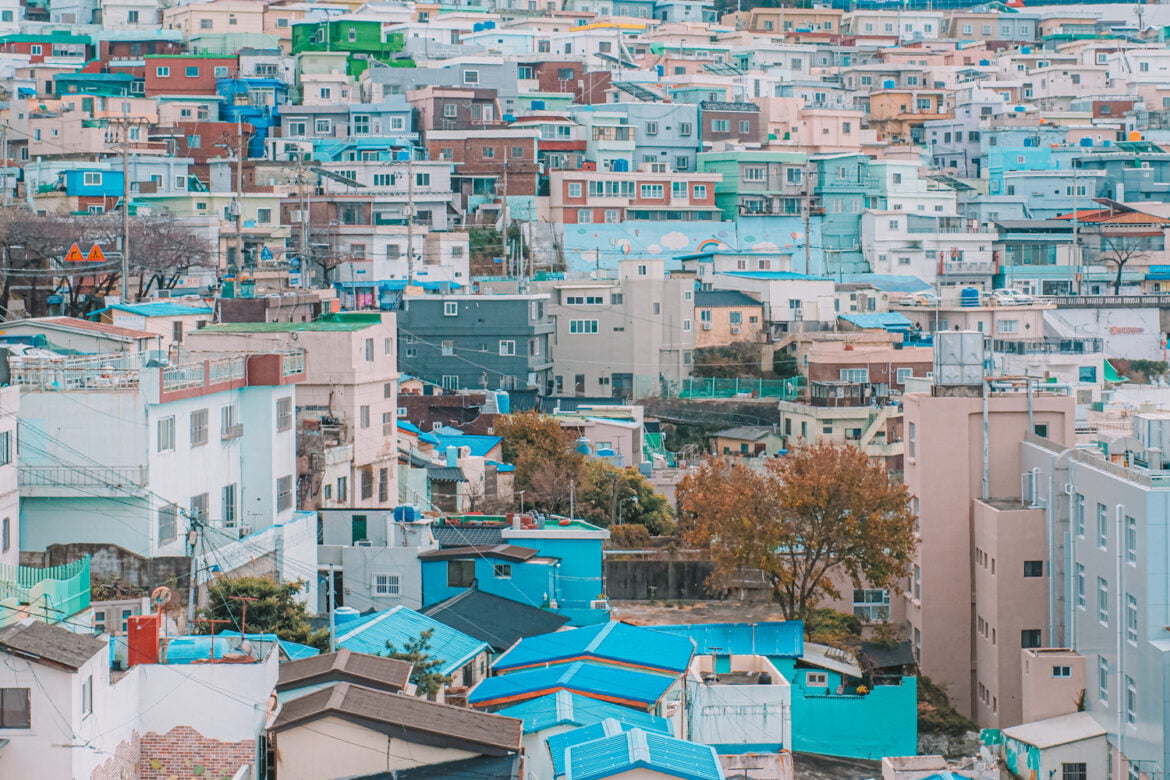It’s undeniable that when thoughts turn to Busan, the initial mental image is likely those impressive coastal skyscrapers. Yet, closely following that iconic scene is the colorful hilly village – a vision often associated with the renowned Gamcheon Culture Village in Saha-gu. However, there’s more to Busan’s artistic canvas than meets the eye. Since 2009, as part of a comprehensive urban renovation initiative, numerous residential areas have undergone significant transformations, resulting in the emergence of various mural villages.
During my recent visit to the city, driven by a desire to revisit the delightful Somang Stairs Monorail, I unexpectedly discovered one such transformed village – Dakbatgol Mural Village. In this post, I am eager to share my experience and guide you through this less-explored locale, offering an alternative attraction for those venturing to Somang Stairs Monorail or exploring Busan. Join me as we delve into this unique, off-the-beaten-path destination!
About Dakbatgol Mural Village:
Situated in the Seo District in the southwest-central part of Busan, Dakbatgol Mural Village (닥밭골 벽화마을) spans the area beneath Mangyang-ro (망양로), the road that hosts the Somang Stairs. Its name, ‘Dakbatgol,’ harks back to the historical abundance of mulberry trees (Dakbat – 닥밭, signifying a mulberry field in Korean) that once thrived here. These trees were meticulously cultivated and harvested, as their bark served as crucial raw materials for Hanji, the traditional Korean paper. While the residential area was established in 1953, it wasn’t until 2010 that the village underwent a remarkable transformation into a mural haven, thanks to the collaborative vision of artist Koo Bon-Ho and the active involvement of local residents.
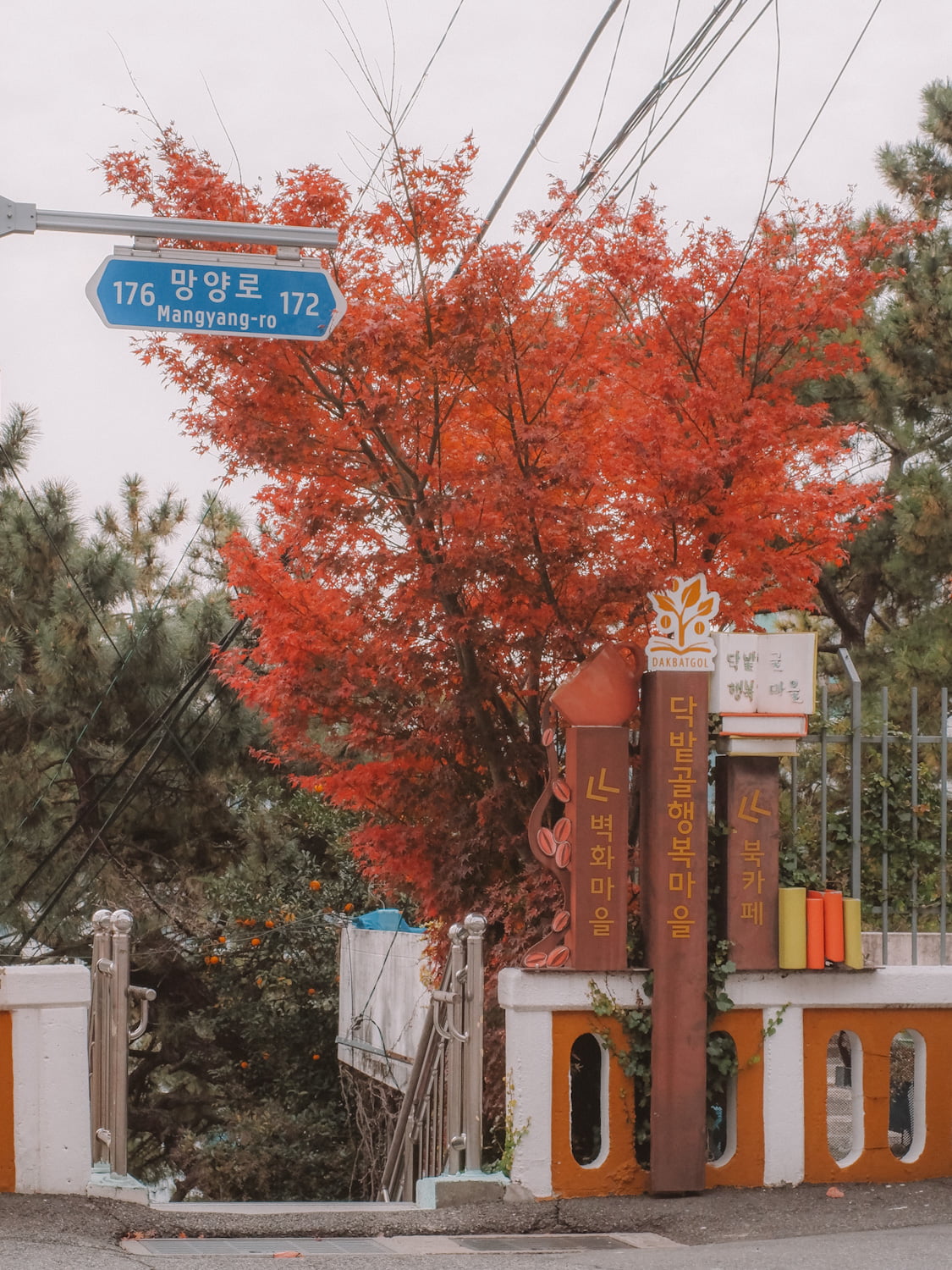
What to Expect during Your Visit to Dakbatgol Mural Village:
Ensure you have ample space on your camera memory card when exploring Dakbatgol Mural Village, as the area is brimming with numerous picturesque spots:
The Main Area: Abundant Murals and Gakbatgol Book Cafe
When you step into the mural village, a riot of colorful wall paintings awaits—exactly what you’d expect. In this central zone, a multitude of vibrant murals and whimsical art installations unfold, each falling under six distinct themes. Among these, you’ll encounter playful displays like chair sets portraying a pig family, a tree of wishes, and mushroom colonies, among others.
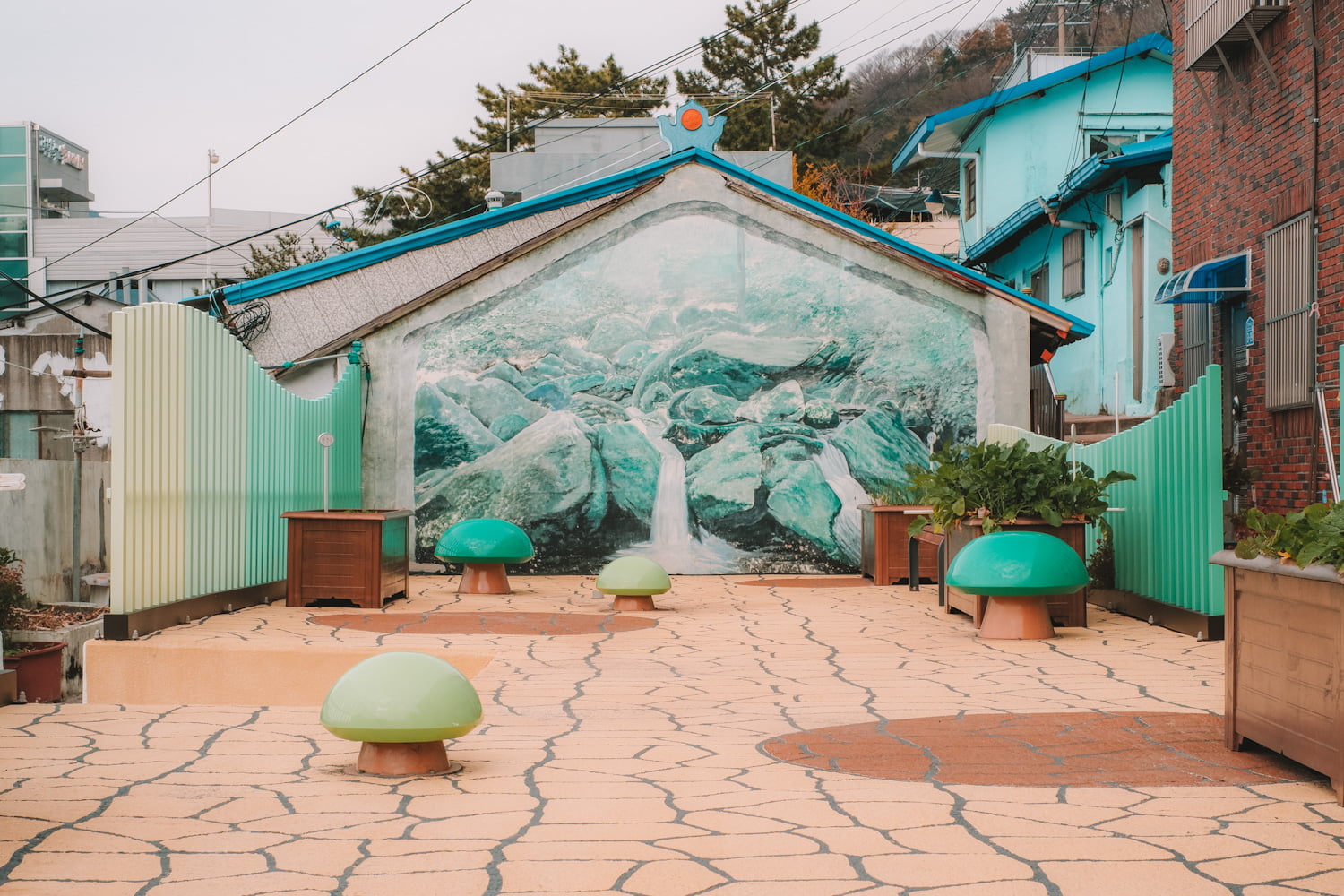
The village is also dotted with small exhibition halls and cultural spaces, offering insights into the village’s rich history.
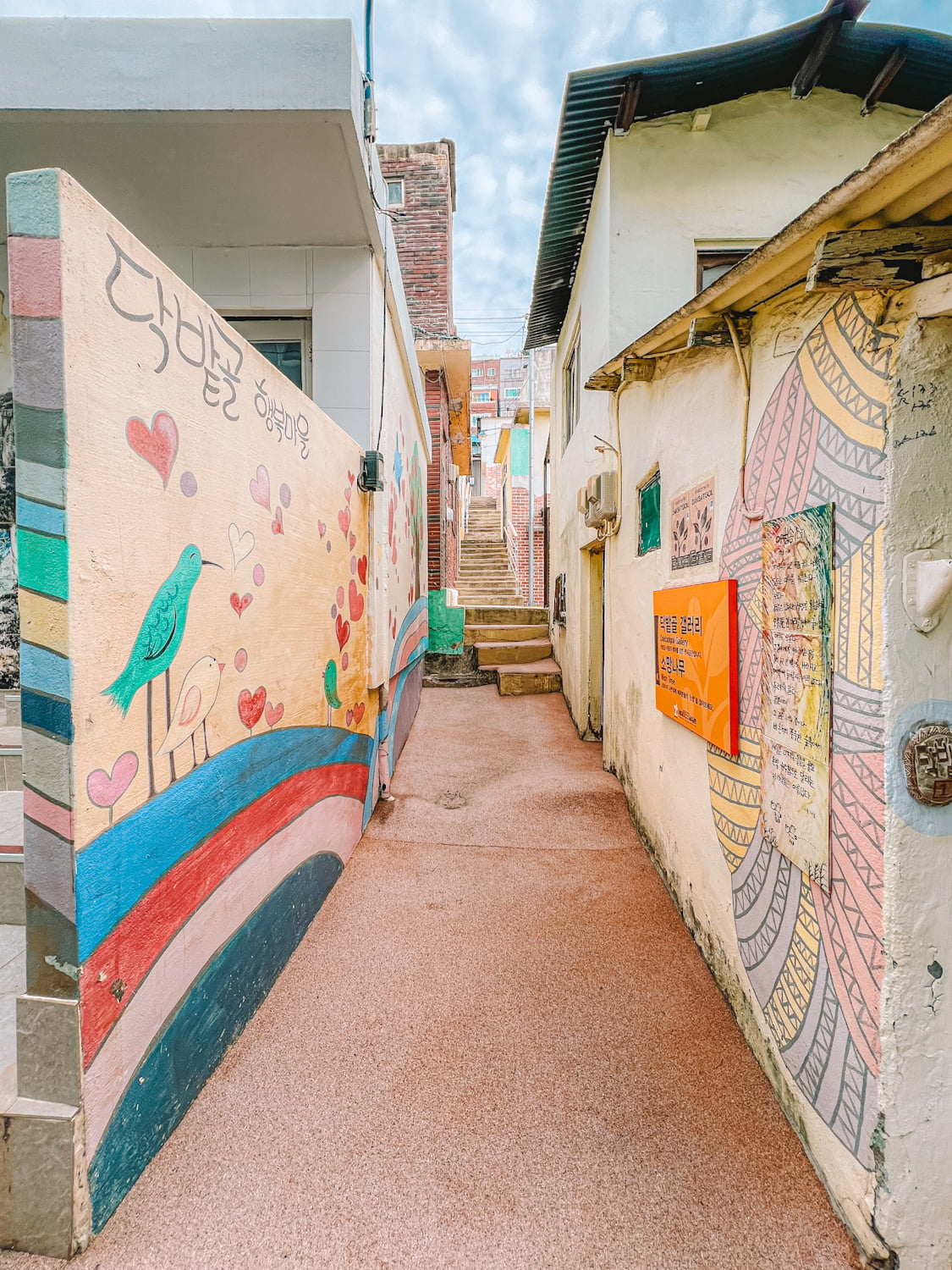
Make sure to drop by the Gakbatgol Book Cafe, the sole coffee haven in the area. You’ll likely be guided there by the presence of signs and flies scattered throughout the village. Beyond delightful beverages, the cafe’s outdoor seating area is exceptionally charming—don’t miss the opportunity to capture some snapshots there!

Gakbatgol Book Café’s Outdoor Area
Buksan-ri Public Parking Lot Elevator: A Panoramic Vantage Point
While the main area of Dakbatgol Mural Village is relatively compact, I highly recommend exploring the surrounding zones to discover even more breathtaking views of both the village and Busan city. Begin by taking the elevator to the top floor of the Buksan-ri Public Parking Lot, conveniently located near the Park Bong-deok Paper Doll Gallery, adjacent to the Gakbatgol Book Cafe. This elevator ride ascends to a higher elevation along Mangyang-ro, offering an exhilarating and panoramic view of the neighborhood.
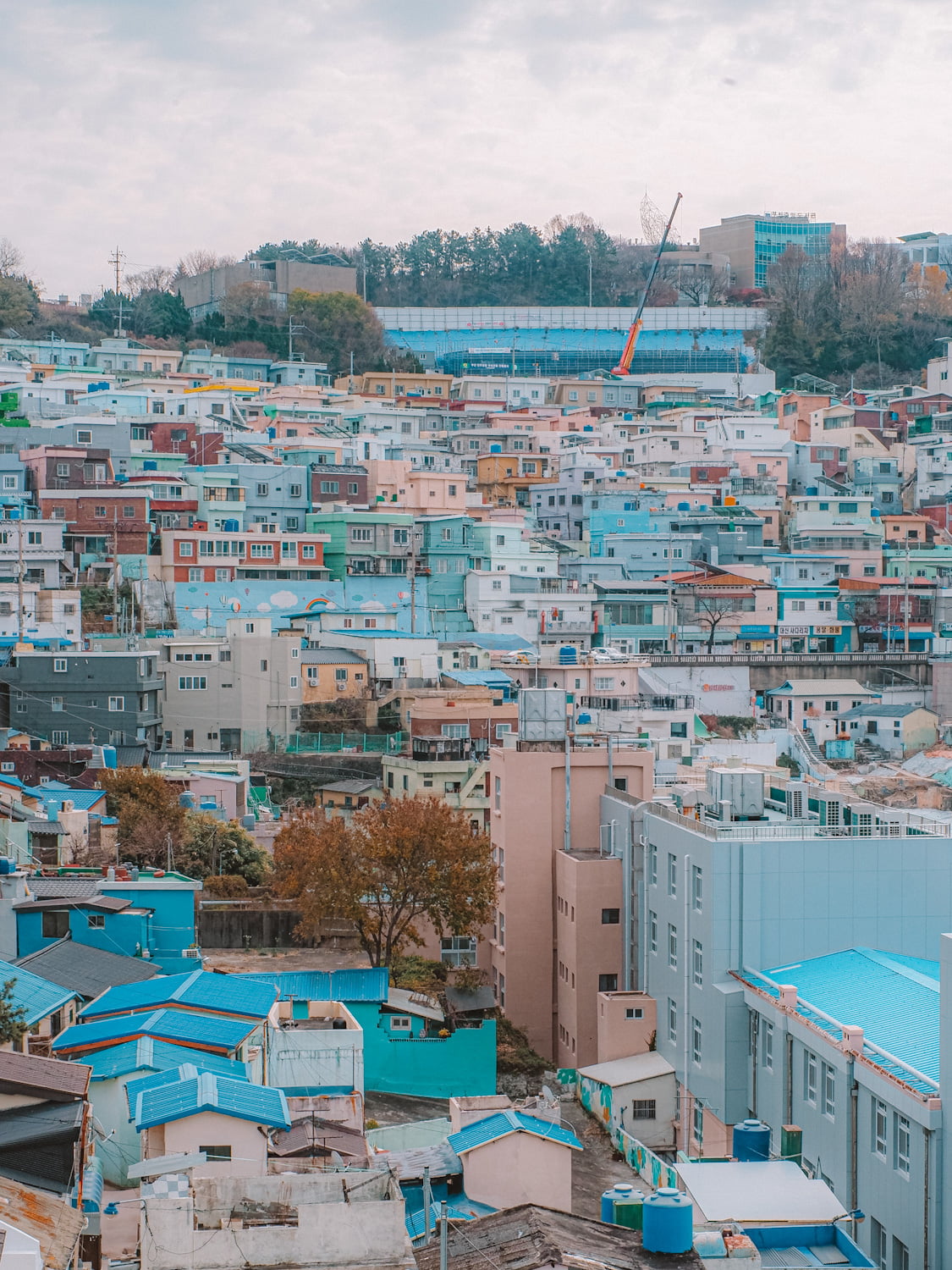
A Picture Shot from the 5th Floor of the Buksan-ri Public Parking Lot
Mangyang Road: Discover More Mosaic Stairs and Walls
Apart from the increasingly popular Somang Stairs (Stairs of Wishes), numerous other stairways in this area boast vibrant mosaic tile adornments, adding an extra layer of color to the neighborhood. As you stroll along Mangyang Road to the east, you’ll encounter several delightful visual treats:
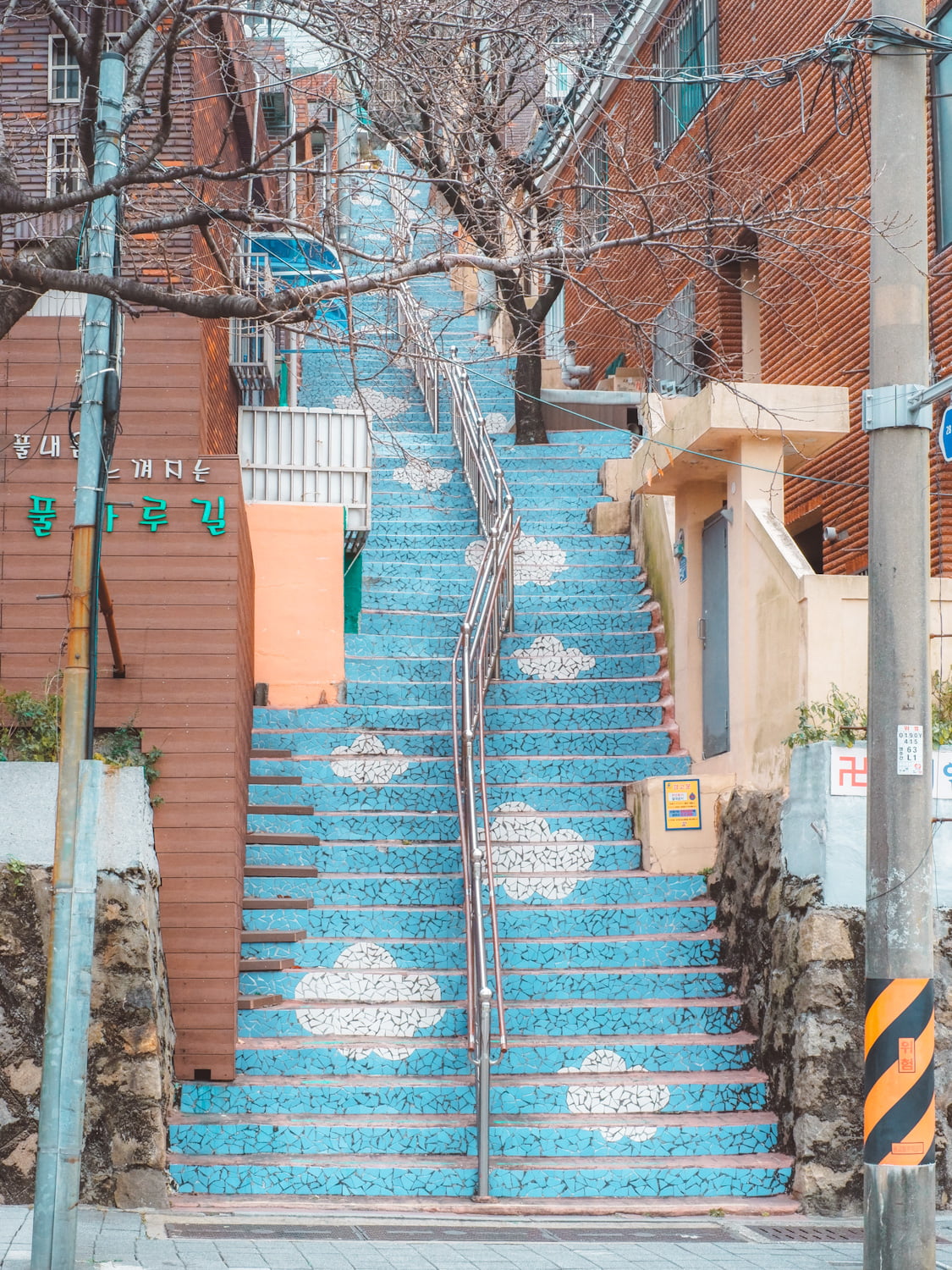
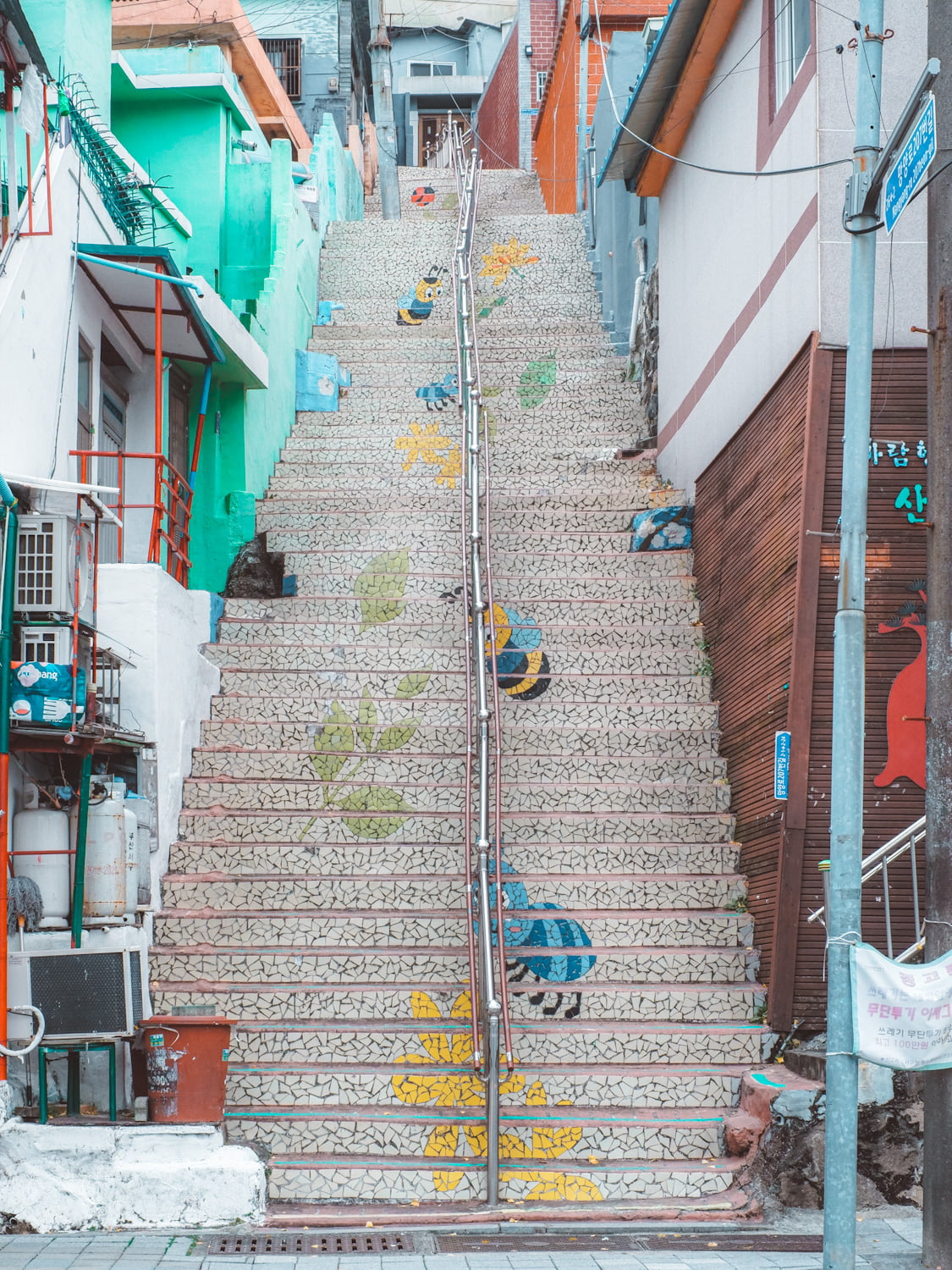
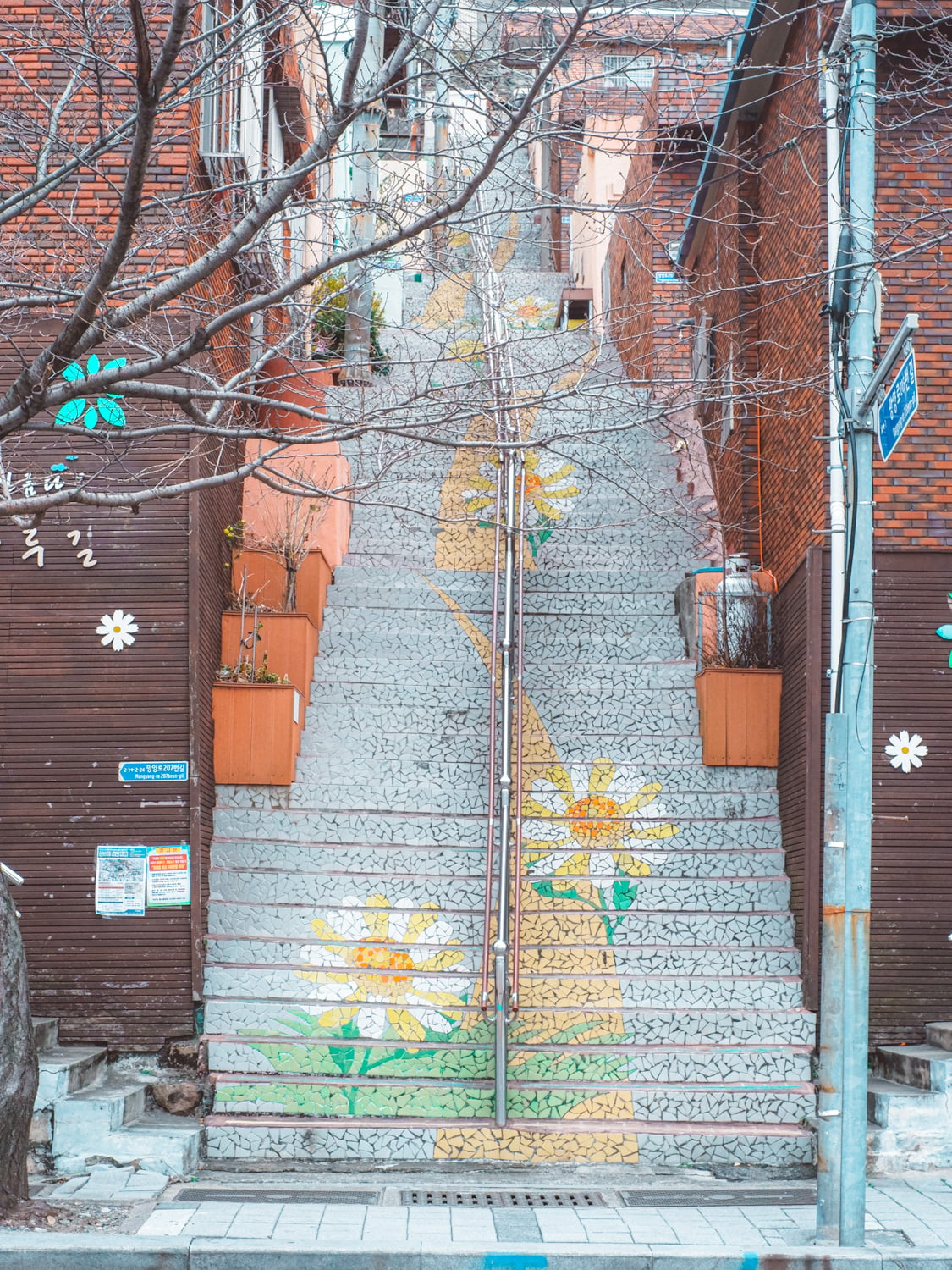
An additional highlight worth noting about Mangyang Road is its distinction as one of Busan’s renowned cherry blossom streets. When spring arrives, the colorful stairs and walls become a canvas for pastel cherry blossoms, transforming the entire neighborhood into a floral paradise. I eagerly anticipate returning to witness this spectacular event firsthand, and I encourage you to do the same. The images of the street adorned with cherry blossoms during spring, as shared on the internet, are simply too charming to miss.
Mangyang-ro Near Busan Democracy Park: Capture the Splendor of Busan Tower
For those with extra time to spare, an additional nearby gem you shouldn’t overlook is Busan Democracy Park (부산민주공원). A leisurely stroll along Mangyang Road from Dakbatgol Mural Village will get you there in approximately twenty minutes. However, if your visit is short, yet you yearn to maximize your Dakbatgol Mural Village experience, hop on bus number 70 or 190 at the stop near Somang Stairs (stop number 02163). Disembark at stop number 01103, situated south of Busan Democracy Park.
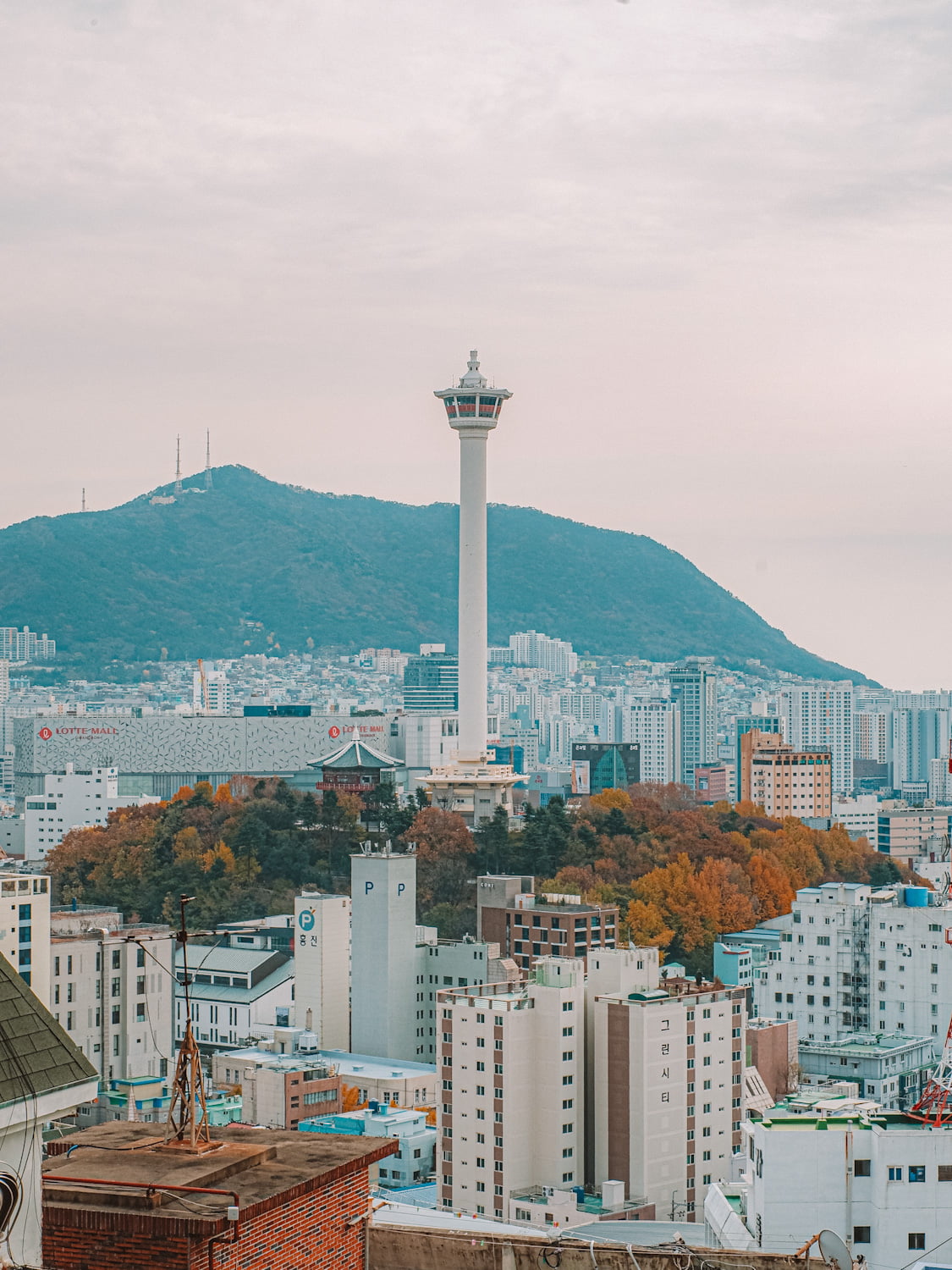
In this vicinity, you’ll be treated to one of the most breathtaking panoramas of Busan’s cityscape, featuring the iconic Busan Tower. The viewpoint offers a clear, expansive, and picturesque vista that includes the Busan Bridge against the backdrop of the ocean. It’s genuinely a must-see spot that shouldn’t be missed!
Getting to Dakbatgol Mural Village from Busan Station:
If your journey to Busan involves arriving at Busan Station without a car, reaching Dakbatgol Mural Village is a straightforward process. Head to bus stop number 03719 near exit 7 of the subway station. Board either bus number 2, 67, 167, or 168. Alight at the Seo Girls’ High School bus stop (stop number 02024). Follow the alleyway adjacent to the bus stop and the signs guiding you to Dakbatgol Mural Village. The bus ride takes around 20 minutes, with a fare of 1,550 KRW.
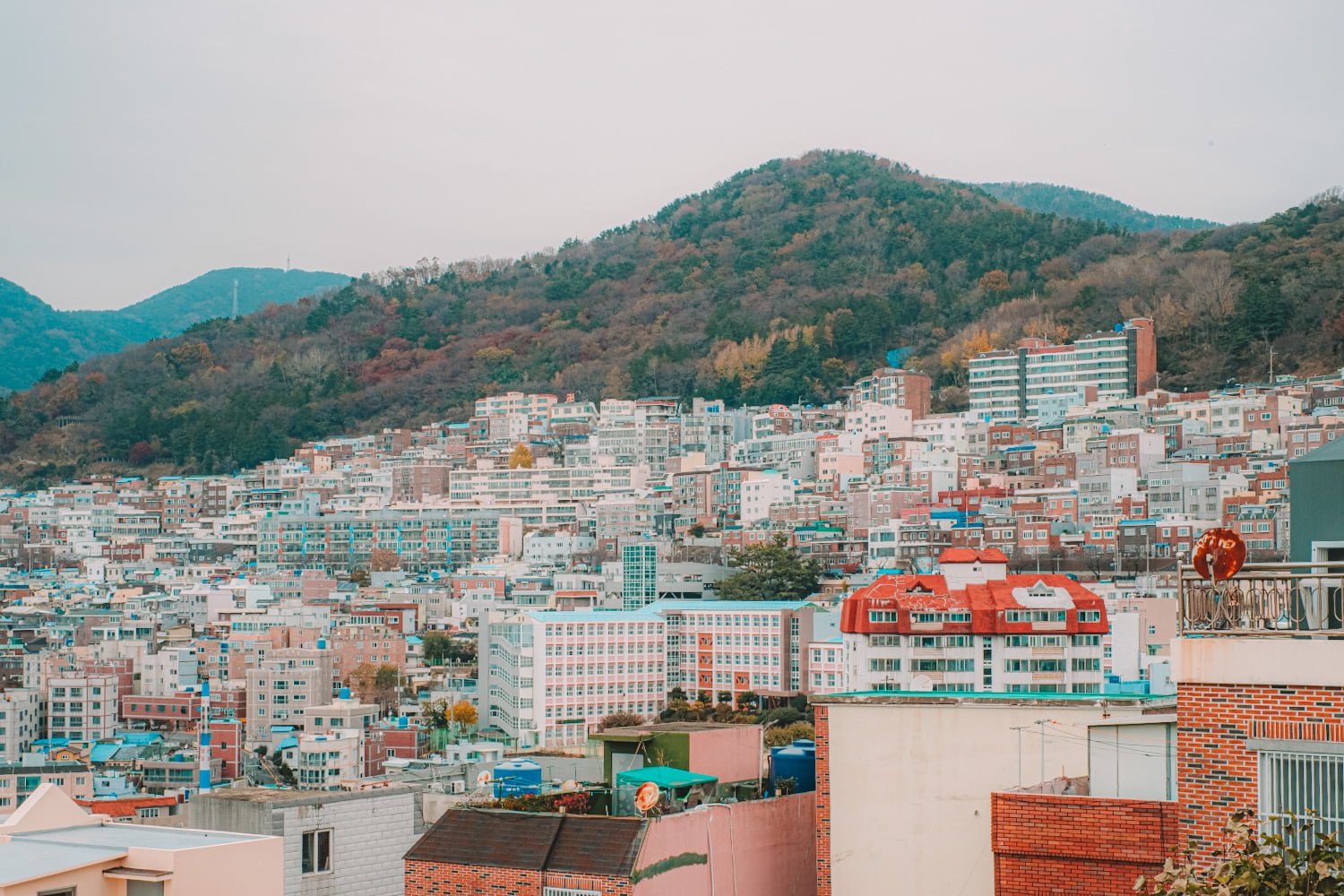
If you’ve made it to this section of the post, congratulations! You’ve successfully navigated the comprehensive guide to uncover all the prime photo and viewing spots in and around the relatively undiscovered Dakbatgol Mural Village in Busan. My intention is that this post shines a well-deserved spotlight on Dakbatgol, a hidden gem that has long been overshadowed by other attractions. I hope it inspires you to explore this charming neighborhood during your next visit to Busan. 🙂
More Pictures from My Visit:
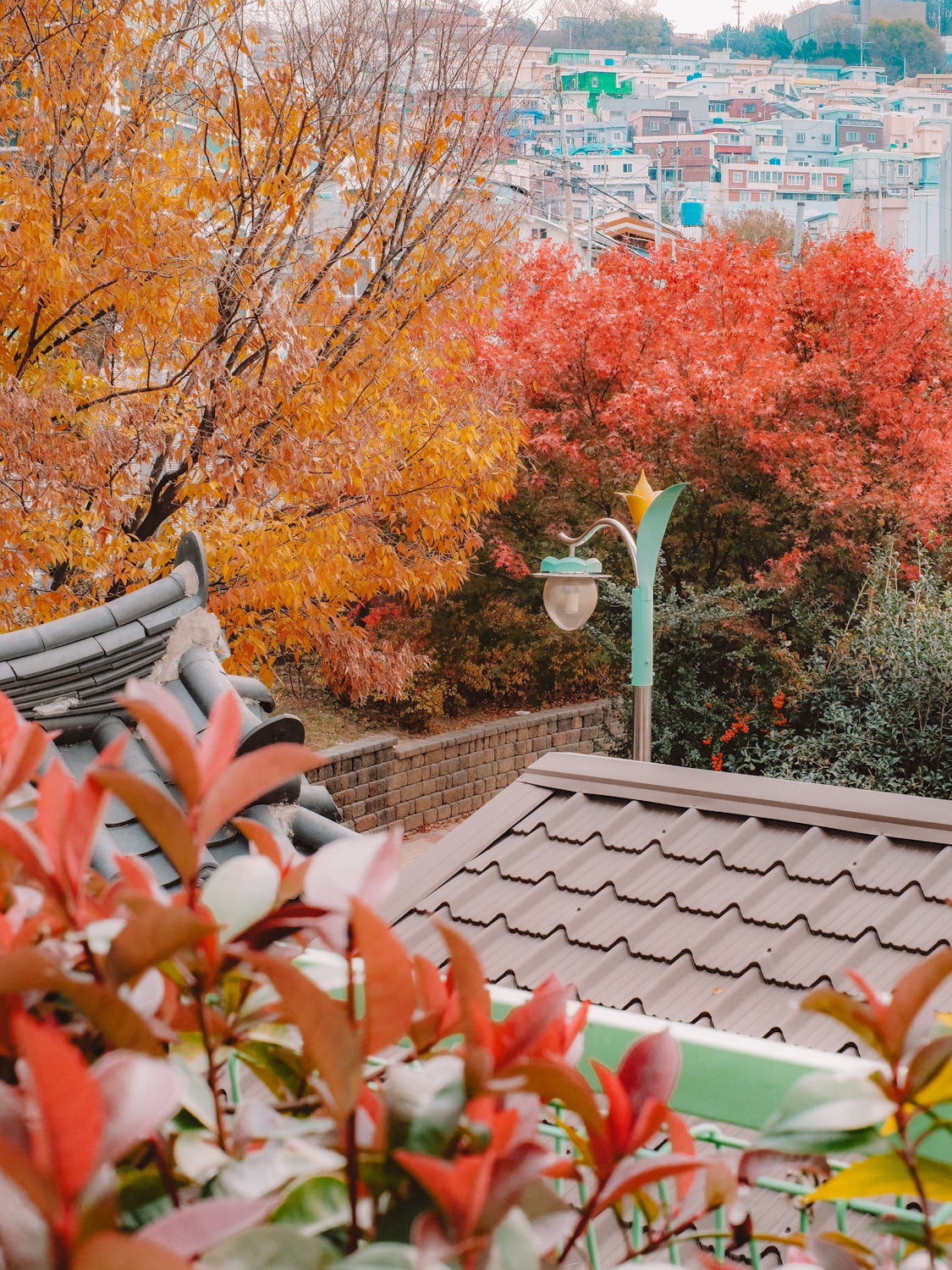
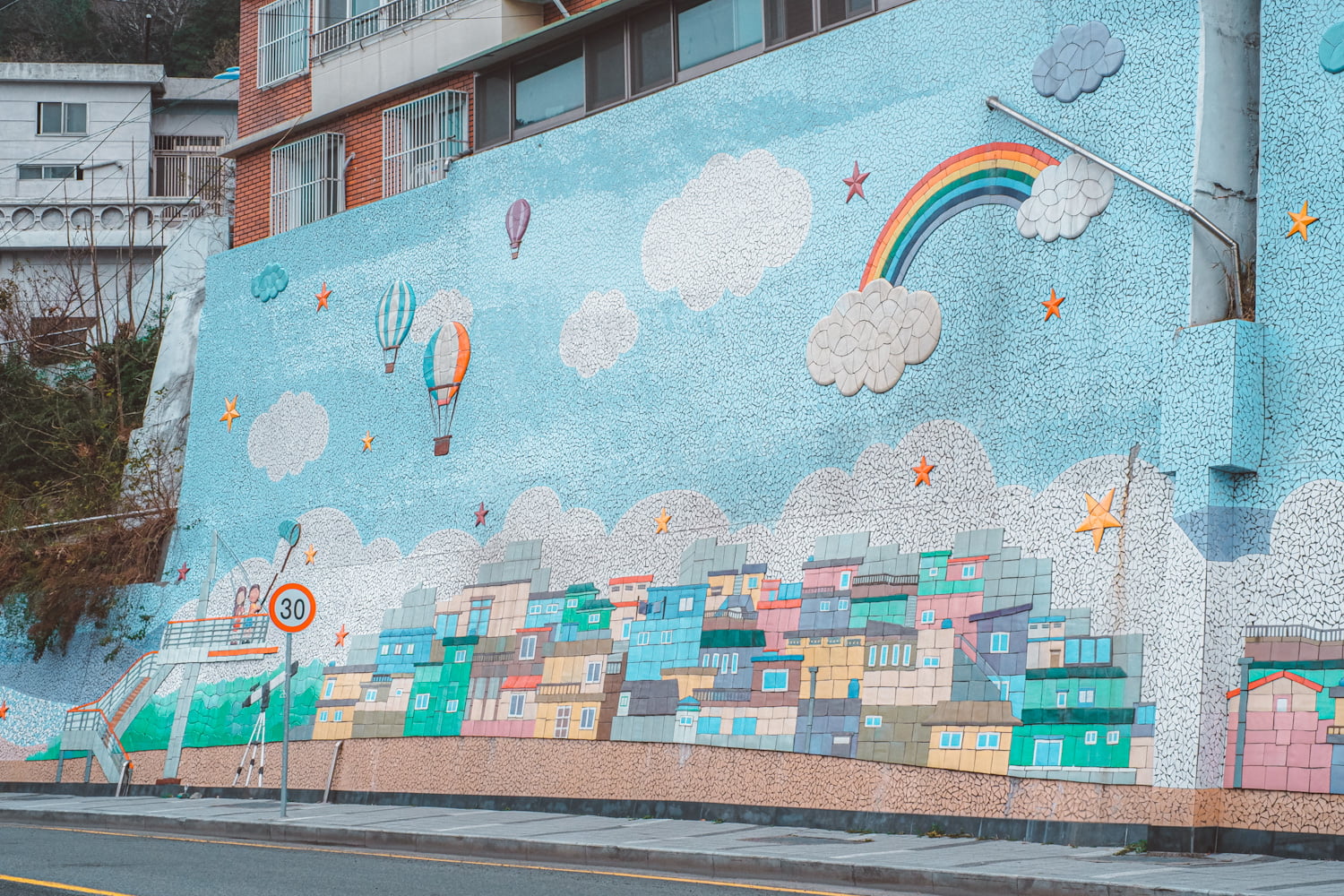
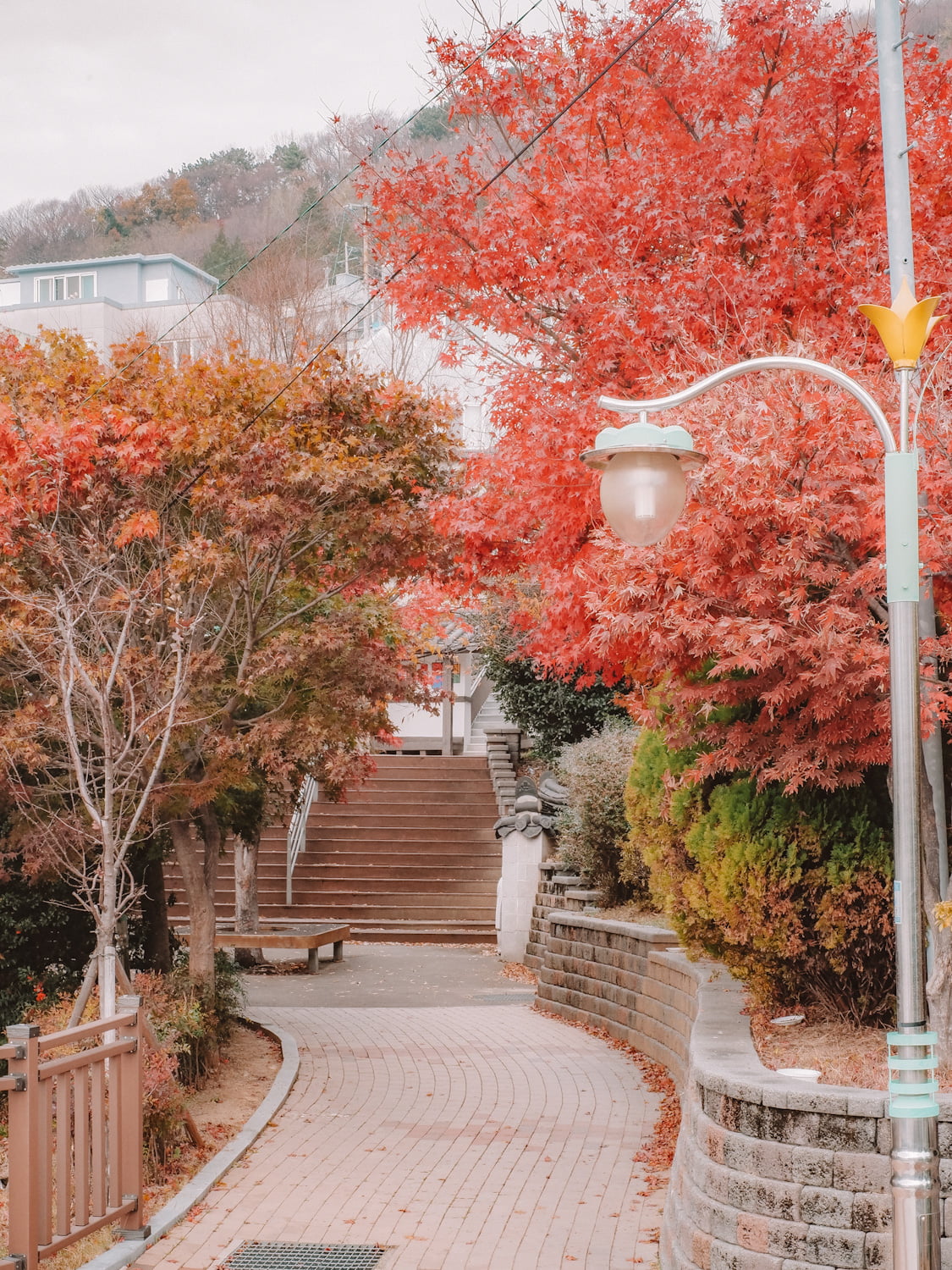
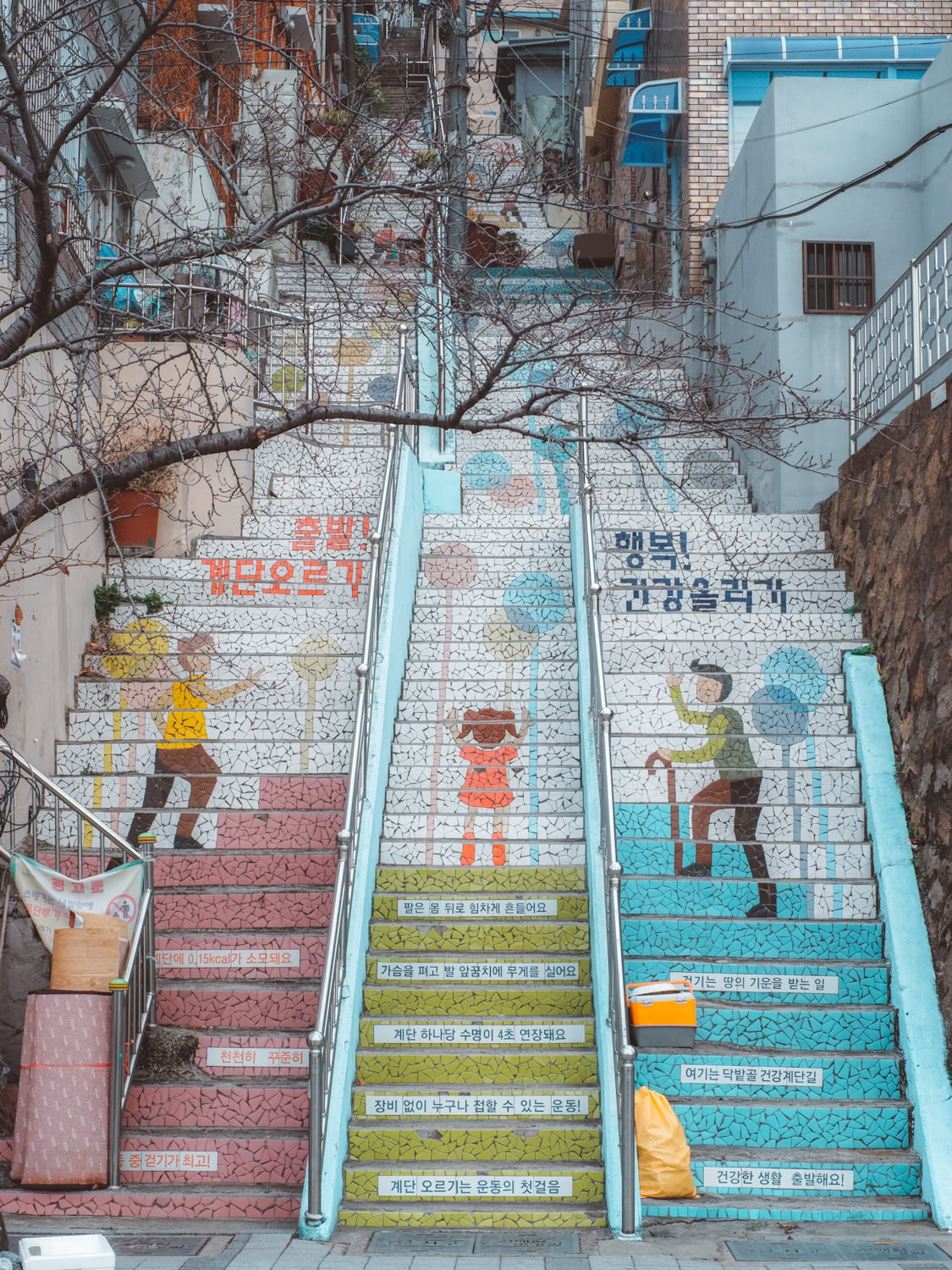

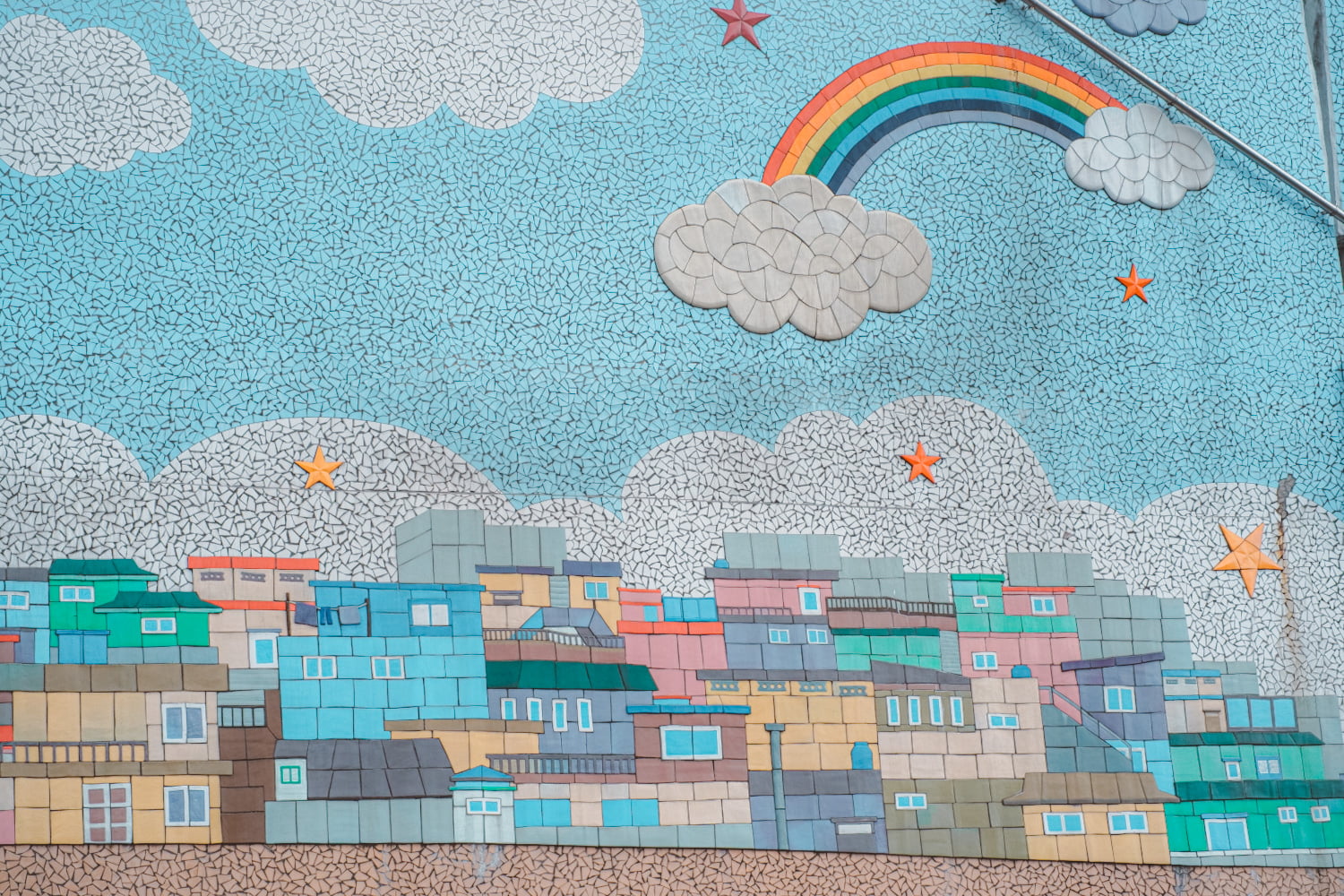
Access Map:
Quick Info About Dakbatgol Mural Village:
Address: 부산광역시 서구 동대신동2가 87-218
Naver Map: Link
Hours: 24/7 (Note: Kindly avoid visits during the nighttime as it is a residential area)
Inquiries and information: 051-240-6421
Visit Date: November 29, 2023
Did this entry help you? Or Did you enjoy my photos? Help support my small blog by giving a little cup of joe. I am always grateful when readers reach out wanting to support 🙂
p.s. This post is independently created. However, when you book or purchase something through the retail links, I may earn an affiliate commission to help keep Ploy’s Little Atlas running. Thank you very much for your support!
p.p.s All images used (unless specified) are owned by the author of the blog and permission is required for a repost. Please, reach out via social media channels to ask beforehand if you’d like to use them.
